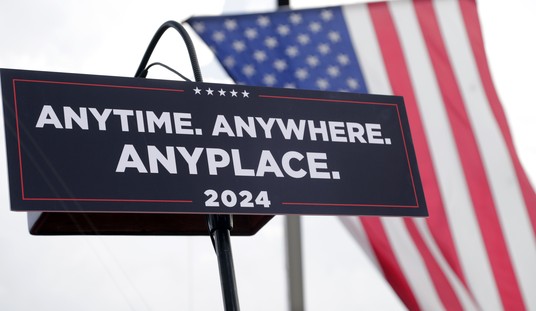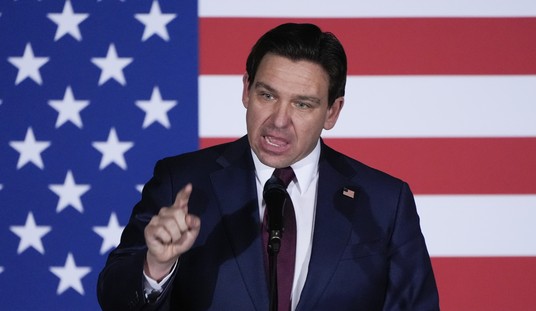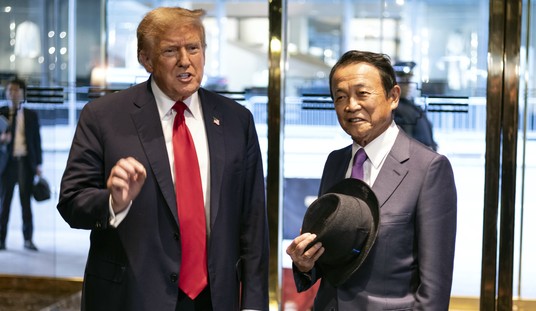“Undercover Trump voters” is Kellyanne Conway’s term, not the LAT’s, but they’re talking about the same phenomenon. Namely, the idea that droves of people who didn’t vote in 2012 (#NeverRomney?) and who may not have voted for years before that are going to turn out this year and put Trump over the top. If there’s a large group out there like that, they won’t factor into the results of some surveys because pollsters focus on registered and likely voters, especially this close to the election. If you’re someone who hasn’t registered yet but is planning to in order to vote for Trump, those polls might not capture your support. And if there are enough people like you out there, that could mean the polls are systematically understating how many actual Trump voters there are.
So the theory goes. The flaw is that it’s very easy to tell a pollster that you’re unregistered but plan to vote this year and not as easy to actually do it.
The existence of a bloc of disaffected voters large enough to potentially swing the election Trump’s way is the main finding from an analysis of the first eight weeks of the daily tracking poll…
The poll respondents who did not vote in 2012 are disproportionately whites who did not graduate from college — Trump’s strongest supporters. Almost six in 10 of the 2012 nonvoters fall into that group. By contrast, non-college-educated whites make up about four in 10 of the poll respondents who did vote four years ago…
As of Tuesday, Trump led by seven points among those who could have voted in 2012 but didn’t. Clinton led by two points among those who voted four years ago or were too young to vote then, the Daybreak poll found. Among whites without a college degree who did not vote in 2012, Trump led Clinton by more than 2-1, the poll found…
Currently, those who did not vote in 2012 give themselves on average a 58% chance of voting this time. That’s considerably less than the 92% average given by those who did vote four years ago. But it may still be too high — surveys routinely find that people overestimate their likelihood of voting.
If non-voters, especially white working-class non-voters, are true to their word about turning out this time for Trump, it’s a tight race. But there are caveats. Even in a best-case scenario where “undercover voters” turn out, notes author David Lauter, the election is a jump ball. Trump’s lead in the LA Times poll comes and goes, after all, despite all of those unlikely voters being factored in. If they don’t turn out for him to the extent they’re promising to do, he’s a dead duck and the election could turn into a landslide. And there’s reason to think some won’t, as noted in the excerpt above: People often aren’t true to their word about their intention to vote. They might not even be telling the truth in claiming that they didn’t vote last time. And if they do sincerely intend to vote, how many “undercover voters” know when their state’s registration deadline is? How many know what they need to do to register? (A campaign with a robust ground game would come in awfully handy on that point.) How many know but will ultimately decide that they can’t be bothered, possibly because their own candidate has assured them there’s a high chance the election will be rigged anyway?
Don’t laugh at the last suggestion. The Times says it has circumstantial evidence in its data that Trump’s dumb “rigged!” demagoguery might end up suppressing his own turnout: “Early in August, for example, the Daybreak poll found a notable decline in Trump supporters’ estimate of how likely they were to vote. The drop came shortly after Trump began making widely publicized claims that the election was rigged against him.”
There’s another issue. Is it really true, as Lauter suggests, that everyone else is underestimating the possibility of “undercover Trump voters” turning out en masse? Democrats seem to be fully aware of it, and other pollsters are using screens to try to capture irregular voters:
On the Democratic side, Hillary Clinton’s campaign is relying on Elan Kriegel, one of the party’s top analytic experts, to monitor the shape of the electorate. The campaign takes pains to survey irregular voters, even those who say they are unlikely to vote, sources inside the campaign said.
But pollsters — left, right and nonpartisan — say it is unlikely that a wellspring of overlooked voters will show up in November, for several reasons.
First, interest in the 2016 presidential campaign is at a record high. A Pew Research Center survey conducted in July showed 80 percent of registered voters have thought about the election quite a lot, a level higher than Pew has ever recorded. That suggests the vast majority of voters, even those who rarely cast votes, are making it through screens designed to weed out unlikely voters.
Second, volumes of political science research suggests that voters who tell a pollster they are unlikely to vote are telling the truth. If they don’t plan to show up on Election Day, they almost certainly won’t.
In fact, both Democrats and Republicans are coming to concrete conclusions about the types of irregular or rare voters who might be attracted to the polls to vote for Trump. Trump is likely to outperform Romney among blue-collar whites in suburban and exurban areas, especially in Midwestern and Rust Belt states hit hard by the decline in manufacturing.
Pollsters are including those voters in their samples, strategists on both sides said.
If you believe Politico, the Democratic brain trust is so confident of victory at this point that they’re practically measuring the drapes. David Plouffe, Obama’s 2008 campaign manager, insists that Pennsylvania is a done deal for Hillary; combined with the 249 reliably blue electoral votes she can count on, that would put her at 269, just one vote short of what she needs to win. (New Hampshire, where she leads big at last check, would put her over the top.) “I would argue she is sitting at 347,” said Plouffe, “but for argument’s sake we can suspend reality for a moment.” Given the amount of resources they’re putting into data and the stakes to them personally if they’re wrong, Democrats likely have a better handle on the state of public opinion now than public pollsters do. I don’t know why Plouffe would bluff about how confident he is either, knowing that a false sense of complacency on the left could lead some iffy Democratic voters to stay home. (The theory will be, I assume, that he secretly knows Hillary is losing but doesn’t want demoralized Trump fans to know he has a real chance.) Either way, the evidence that Team Hillary is worried about “undercover Trump voters” is very thin.
One last piece worth reading, though, if you’re looking for hope that the pollsters are underestimating Trump. Harry Enten of FiveThirtyEight published an analysis a few days ago noting that polls which involve live pollsters interviewing people over the phone have begun to show better numbers consistently for Hillary than automated or Internet polls that don’t involve a live person do. That wasn’t true earlier in the campaign but it’s true now. The difference isn’t wide enough to change the race fundamentally — Hillary leads by 7.1 points in live-interview polls versus 4.8 in automated ones — and Enten tends to believe that the live-interview polls are more accurate, but if you’re looking for evidence of a “Bradley effect” in which secret Trump voters are ashamed to tell a person on the phone that they intend to vote for him, there you go.








Join the conversation as a VIP Member